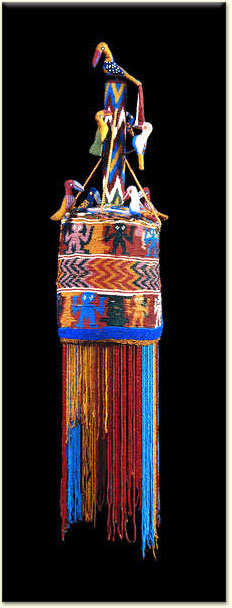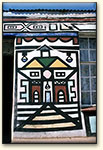What is African Art?
Any discussion of African art begs the question, What is African art? In the West, painting has enjoyed a privileged status both as an object and as the source of critical theory. In Africa, painting was an attribute of the applied arts or a means to decorate surfaces on sculpture, pottery, or architecture, such as on the walls of South African Ndebele homesteads.

Beaded crown (ade ileke), Yoruba, 19th century, Nigeria.
Painting has a secure place in settled communities, but sub-Saharan Africa’s history is one of prolonged migrations and complex settlement patterns. Useful objects, such as pots, mats, clothes, stools, headrests, and spiritually important artifacts are portable; paintings and big sculptures are not. Westerners responded positively to civilizations that produced painting and sculpture. On first encountering African cultures, they applied their own values and decided that Africa had little or no “art.” Instead, it had “craft,” material culture objects studied as anthropological artifacts, and “idols” or “fetishes.”
Twentieth-century African studies demonstrate that art in Africa needs to be understood in African terms, rather than from a European worldview. Craft-based activities in Africa yielded “art” that was used and valued for its functionality, its decorative and symbolic designs, and its spiritual dimensions. Color was not manipulated in terms of intellectually conceived color theory, and it was not expressive in itself (as it was to become in the art of Van Gogh, Matisse, or Kandinsky). Rather, color was used intuitively, choices being made from available chromatic alternatives arranged to fuse visual dynamics with symbolic connotations. In many communities, natural materials produced color; as such, earth colors and dyes from plants created a limited range of colors. For this reason, imported trade beads were highly valued since they extended color choices. Later imported cloth further widened color choices.
